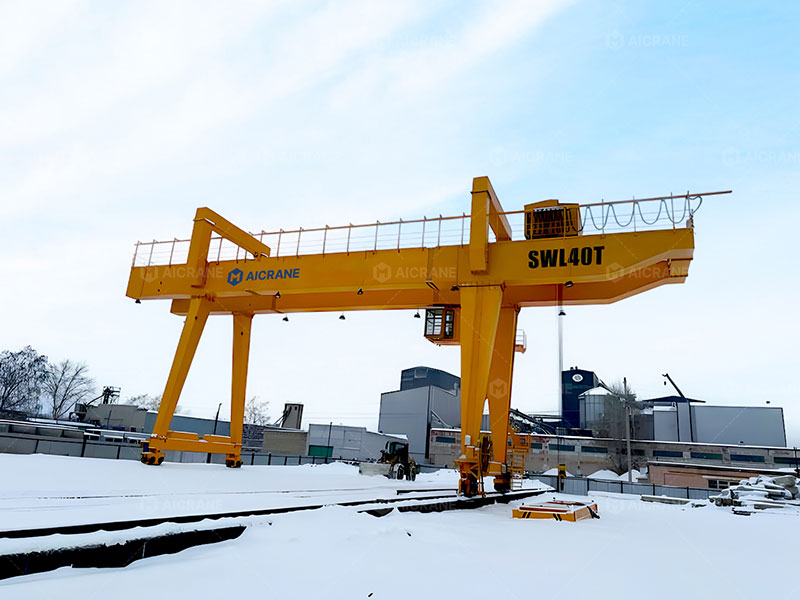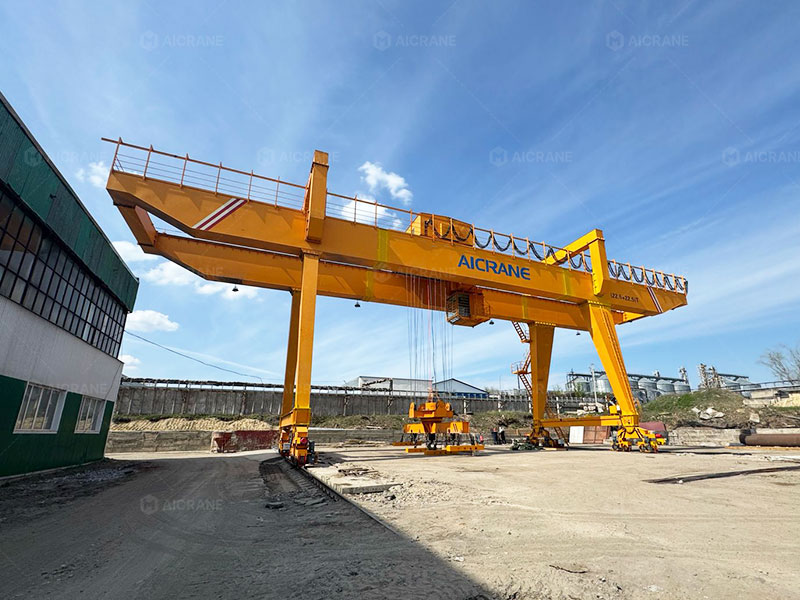Heavy duty gantry cranes play a critical role in lifting and transporting oversized and heavy materials in industrial environments such as shipyards, precast concrete plants, steel mills, and ports. One of the essential structural elements in the design of these cranes – especially when flexibility in load handling is required – is the cantilever.
The cantilever structure allows the crane to extend beyond its support legs, enabling it to reach areas outside the typical rail or wheelbase. However, designing a cantilevered gantry crane for heavy duty use requires precise calculations, proper materials, and a deep understanding of operational and safety requirements.
This article explores the key design considerations for cantilever arms in heavy duty gantry cranes, helping engineers and facility planners ensure functionality, stability, and safety.

What is a Cantilever in a Gantry Crane?
A cantilever in a gantry crane is the projecting end of the crane girder that extends beyond the supporting legs. It allows for overhanging loads, which is particularly useful when lifting materials over obstacles or placing loads outside the crane’s track system.
Cantilevered ends are commonly found in rail-mounted gantry cranes (RMGs) and rubber tyred gantry cranes (RTGs) where the working area may extend beyond fixed tracks or where accessibility to outer edges of the worksite is essential.
1. Load Distribution and Structural Stress Analysis
The foremost consideration in cantilever design is how the structure will handle asymmetrical load distribution. Since the cantilevered portion is unsupported at one end, it experiences a combination of bending moments and shear forces that are far more complex than the centrally supported beam sections.
Key factors include:
-
Dead weight of the cantilever itself
-
Live load (the maximum weight it will lift)
-
Dynamic forces during hoisting and trolley movement
-
Stress concentrations at the transition from cantilever to supported girder
A finite element analysis (FEA) is often used during design to simulate stress distribution and deformation, ensuring the cantilever can withstand expected loads without structural fatigue.

2. Span and Cantilever Length Ratio
The length of the cantilever arm relative to the total gantry crane span significantly affects performance and safety. For heavy-duty gantry cranes, cantilever extensions should be limited to prevent excessive deflection and instability.
Best practices suggest:
-
A cantilever length not exceeding 1/5 to 1/4 of the total span
-
Adjustments depending on hoist positioning, trolley load path, and expected lifting locations
Longer cantilever arms increase structural demands and may require counterweights or reinforced girders to maintain balance.
3. Material Selection and Beam Profile
Material strength is vital in cantilever design. The beam must resist bending without failure or significant deformation.
Common materials used:
-
Q355B or Q345 steel in China
-
ASTM A572 Grade 50 or Grade 65 in the U.S.
-
S355 structural steel in Europe
The beam profile should offer a high moment of inertia. Box girders are often preferred over I-beams in heavy-duty cantilever applications due to their superior torsional rigidity and load-carrying capacity.
4. Hoist and Trolley Travel Limits
In cantilevered sections, trolley travel must be carefully controlled. Running the trolley too close to the unsupported end increases the risk of:
-
Girder deflection
-
Structural fatigue
-
Tipping of the crane in extreme cases
Designers typically include limit switches or buffer zones to restrict trolley movement and avoid unsafe load positions. In some cases, load charts may limit the maximum weight that can be lifted over the cantilevered area.
5. Support Leg Configuration and Stability
A cantilever gantry crane must maintain overall balance and center of gravity. The positioning and structural integrity of the crane legs and wheelbase are vital to prevent tilting or overturning.
Design considerations:
-
Wider leg spacing on the cantilevered side to increase stability
-
Heavier or reinforced end trucks to counterbalance the cantilever
-
Optional use of anchoring systems or outriggers for additional support when stationary
6. Wind Load and Seismic Considerations
Outdoor heavy-duty gantry cranes must withstand wind loads, especially in regions prone to typhoons or high winds. A cantilevered design increases the sail area, which can induce greater lateral forces.
For locations in seismic zones, the cantilever structure must also absorb seismic energy without collapsing or losing function. Compliance with standards such as Eurocode 8, ASCE 7, or local seismic codes is necessary.
7. Custom Engineering for Application Needs
The decision to include a cantilever should be based on the specific application:
-
Shipbuilding: Allows cranes to reach across hulls or outboard areas
-
Precast yards: Ideal for loading components onto trucks outside the rails
-
Steel storage areas: Helps in reaching irregularly placed stockpiles
Custom design should factor in site layout, workflow, and load handling logistics.
8. Maintenance and Inspection Accessibility
Cantilever sections often require more frequent inspections due to the higher stress levels. Consider including:
-
Walkways or maintenance platforms on the cantilever for ease of access
-
Inspection points for welding seams, bolts, and joints
-
Remote monitoring sensors for stress and deflection analysis
9. Compliance with International Standards
A cantilevered heavy-duty gantry crane must adhere to recognized standards:
-
FEM (European Federation of Materials Handling)
-
CMAA (Crane Manufacturers Association of America)
-
ISO 8686-1: General principles for crane load combinations
-
ASME B30.2: Safety standards for overhead and gantry cranes
Following these standards ensures safety, reliability, and ease of permitting or certification.
Conclusion
Cantilever design in heavy-duty gantry cranes provides greater operational flexibility, allowing cranes to serve extended workspaces and reach hard-to-access areas. However, this design feature introduces complex engineering challenges, from load distribution and deflection control to stability and safety compliance.
By carefully considering the structural integrity, material choice, load paths, and application needs, engineers can successfully design cantilevered gantry cranes that are both efficient and safe for industrial operations.
Whether you are planning a new heavy-duty gantry crane or retrofitting an existing system with cantilever extensions, working with experienced crane engineers and adhering to global standards is essential for long-term performance and safety.
